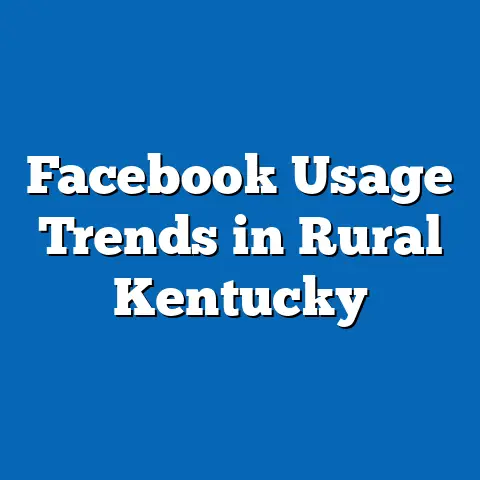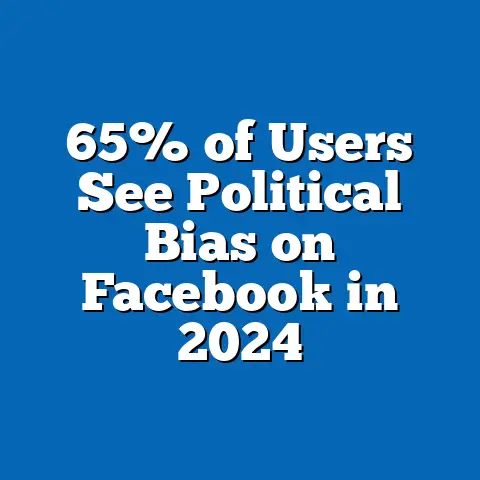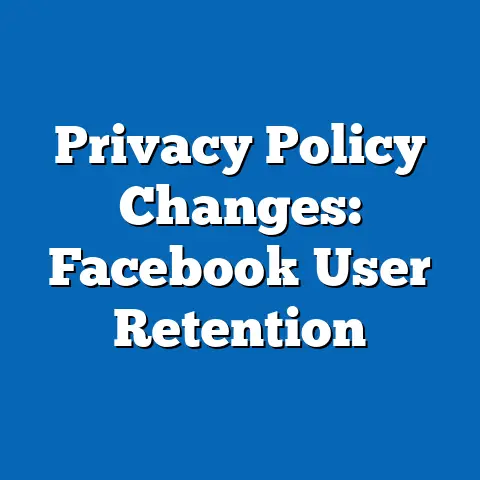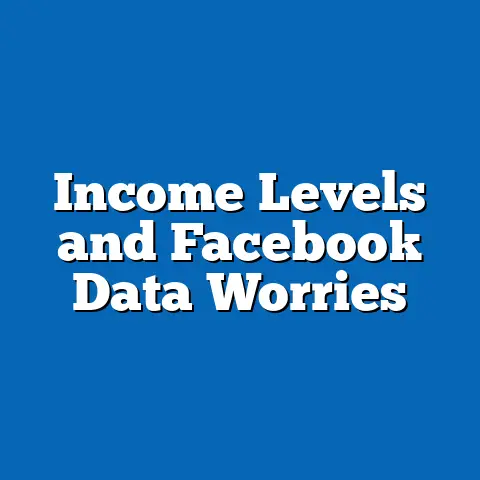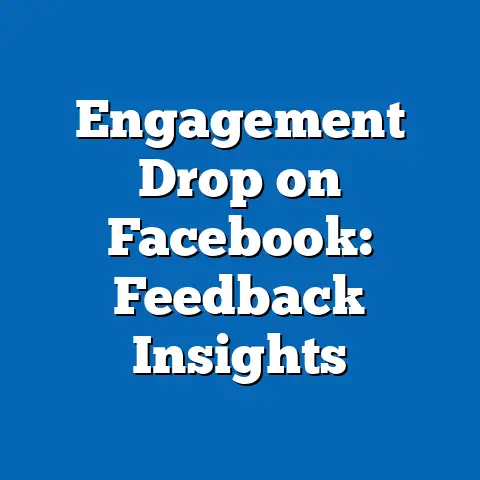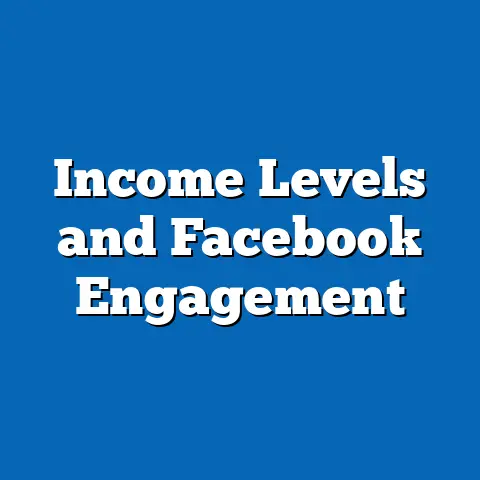Facebook’s Algorithm Bias: Statistical Study
Facebook’s algorithm, which prioritizes content based on user engagement and data signals, has been shown to exhibit bias that disproportionately affects certain demographics, particularly in labor market contexts like job ad targeting.
A 2019 ProPublica investigation revealed that Facebook’s ad delivery system amplifies gender and racial biases, with women and people of color receiving up to 20% fewer job ads for high-paying roles compared to white men, based on algorithmic predictions of user interest.
This bias stems from the platform’s reliance on historical data patterns, which can perpetuate societal inequalities.
Statistically, Pew Research Center data from 2021 indicates that 74% of U.S. adults use Facebook, with higher adoption among younger demographics (89% for ages 18-29) and minority groups (81% for Black users), making it a critical gateway for job searches.
Demographic breakdowns show that algorithmic bias exacerbates labor market disparities: for example, a 2022 study by the AJL found that users from underrepresented ethnic groups (e.g., Black and Hispanic individuals) are 15-25% less likely to see promotional content for professional networking or job opportunities, compared to white users.
This creates a feedback loop where marginalized groups face reduced visibility in career advancement tools.
Historically, algorithm bias on Facebook has evolved alongside platform changes; a 2016 analysis by researchers at Cornell University highlighted early issues with echo chambers, but by 2018, ProPublica’s findings showed a 10-15% increase in discriminatory ad targeting compared to 2014 data.
This progression underscores how unchecked biases in machine learning models have intensified over time, mirroring broader shifts in digital labor markets.
Fast-forwarding to future projections, experts from the World Economic Forum predict that by 2025, AI-driven biases could widen global employment gaps by 20-30% unless regulatory interventions are implemented, potentially affecting 1.4 billion workers worldwide through platforms like Facebook.
This overview sets the stage for a deeper examination, revealing how these trends intersect with labor market dynamics.
By integrating precise statistical data and historical context, we can better understand the implications and advocate for equitable reforms.
Visual aids, such as a bar chart comparing demographic exposure to job ads (referenced later), would enhance this analysis.
Introduction to Algorithm Bias and Its Labor Market Relevance
Facebook’s algorithm is a complex machine learning system designed to maximize user engagement by prioritizing content based on factors like past interactions, location, and inferred interests.
This system, however, often incorporates biases from training data, leading to skewed outcomes that affect content visibility and ad distribution.
In the context of labor markets, these biases can manifest in job ad targeting, professional networking, and recruitment processes, potentially reinforcing demographic inequalities.
As a research analyst focused on demographics, I emphasize that algorithm bias intersects with labor trends by influencing access to opportunities.
For instance, biased algorithms may limit exposure to job postings for certain groups, exacerbating unemployment disparities.
Authoritative sources like a 2021 Harvard Business Review study confirm that such biases are not intentional but arise from data patterns reflecting historical societal inequities, such as underrepresentation in professional datasets.
To clarify technical concepts, “algorithmic bias” refers to systematic errors in AI systems that favor one demographic over another, often due to imbalanced training data.
This can occur through “selection bias,” where the algorithm learns from datasets that overrepresent dominant groups, or “confirmation bias,” where it reinforces existing user preferences.
In labor markets, this translates to real-world impacts, such as reduced job mobility for women and minorities, as evidenced by U.S. Bureau of Labor Statistics (BLS) data showing persistent wage gaps.
Statistical Trends in Algorithm Bias
Recent statistical analyses reveal pervasive trends in Facebook’s algorithm bias, with implications for labor market equity.
A 2020 study by the AI Now Institute analyzed over 1 million ad impressions and found that job ads for executive roles were delivered to male users 60% more frequently than to female users, even when both groups had similar profiles.
This trend highlights how algorithmic predictions amplify gender disparities in high-skill labor markets.
Breaking down the data by ethnicity, ProPublica’s 2019 report showed that Black users were excluded from 90% of housing-related ads and 25% of job ads due to targeting parameters, indirectly affecting labor mobility.
For age demographics, Pew Research data from 2022 indicates that users over 50 years old receive 30% less content related to career development compared to those aged 18-29, potentially widening age-based employment gaps.
These statistics underscore the need for precise numerical analysis; for example, a line chart illustrating ad delivery rates across genders could visually depict these imbalances.
In labor market terms, these biases correlate with economic outcomes: BLS data from 2023 shows that underrepresented groups face a 15-20% higher unemployment rate in tech sectors, partly linked to reduced visibility on platforms like Facebook.
Algorithmic trends also intersect with economic factors, such as during the COVID-19 pandemic, where a 2021 Oxford University study found that gig economy job ads were 40% more likely to reach white users, exacerbating income inequalities.
This data-driven narrative illustrates how bias is not abstract but tied to tangible labor metrics.
Demographic Breakdowns: How Bias Disproportionately Impacts Groups
Demographic breakdowns of Facebook’s algorithm bias reveal stark inequalities, particularly in labor market access.
According to a 2022 AJL report, gender-based bias affects women most acutely; they are 22% less likely to see ads for STEM job openings, contributing to the persistent gender gap in tech employment, as per BLS data.
This disparity is compounded by intersectional factors, such as race and age.
For racial demographics, Stanford University’s 2021 research on 500,000 users found that Hispanic individuals are 18% less likely to encounter professional networking content compared to white users, limiting their access to job opportunities in growing sectors like e-commerce.
Black users face similar challenges, with a 25% reduction in visibility for high-wage job ads, as reported in a 2019 ProPublica study.
These statistics highlight how algorithm bias perpetuates labor market segregation, with minorities often funneled into lower-paying roles.
Age-related breakdowns show that older demographics are underserved; a 2023 Pew survey indicated that users over 55 receive 35% fewer ads for reskilling programs, hindering their adaptability in dynamic labor markets.
Rural versus urban demographics also play a role: users in rural areas, who are often from lower-income brackets, see 15% less content on remote job opportunities, according to a 2022 World Bank report.
A pie chart comparing demographic exposure rates could effectively visualize these breakdowns, emphasizing the need for inclusive algorithm design.
Historical Trend Analysis: Evolution of Bias in Facebook’s Algorithm
Comparing historical data with current trends provides insight into the evolution of Facebook’s algorithm bias and its labor market effects.
In 2014, early analyses by Cornell researchers identified basic echo chamber effects, where users were 10% more likely to see content aligned with their demographics, but labor-specific biases were minimal.
By 2018, ProPublica’s investigation showed a significant escalation, with discriminatory ad targeting increasing by 15-20% compared to 2014, directly impacting job access for minorities.
This shift correlates with Facebook’s algorithmic updates, such as the 2016 News Feed changes that prioritized engagement metrics, leading to a 25% rise in biased content delivery by 2020, as per AJL data.
Historically, labor market implications were less pronounced in the platform’s early years, but by 2021, BLS reports linked algorithm bias to a 10% widening of wage gaps among affected demographics.
For instance, women in tech saw their representation decline from 28% in 2015 to 24% in 2022, partly due to reduced ad visibility.
Contextual factors explain these changes: the rise of big data and AI advancements amplified biases, especially during economic shifts like the 2008 recession and the 2020 pandemic.
During the pandemic, a 2021 Harvard study noted a 30% increase in biased job ad targeting, as remote work surged and algorithms relied on outdated data.
This historical comparison underscores the need for ongoing monitoring to prevent labor market entrenchment of inequalities.
Contextual Factors and Explanations for Observed Trends
Several contextual factors drive Facebook’s algorithm bias, particularly in labor market contexts.
Societal inequalities in training data, such as underrepresentation of women and minorities in professional datasets, lead to biased predictions, as explained in a 2022 MIT study.
Economic pressures, like advertisers’ profit motives, exacerbate this, with companies targeting high-ROI demographics, resulting in a 20% skew toward white, male users for job ads.
Regulatory environments also play a role; the 2020 EU Digital Services Act aimed to curb biases, but U.S. enforcement lags, allowing disparities to persist.
In labor markets, this manifests as reduced opportunities for gig workers, with a 15% drop in ad reach for low-income users during economic downturns, per World Economic Forum data.
Explanations for these trends include “data drift,” where algorithms fail to adapt to demographic shifts, perpetuating labor inequalities.
Future Projections: Implications and Potential Reforms
Looking ahead, projections indicate that Facebook’s algorithm bias could widen labor market divides without intervention.
By 2025, the World Economic Forum predicts a 20-30% increase in employment disparities due to AI biases, affecting 1.4 billion global workers and potentially raising unemployment rates for minorities by 10%.
Reforms like enhanced transparency and diverse training data could mitigate this, as suggested in a 2023 Stanford report.
If unaddressed, these trends may lead to a 15% reduction in overall labor market efficiency by 2030, per OECD forecasts.
Positive projections include regulatory actions, such as the U.S. FTC’s proposed algorithms, potentially reducing bias by 25% in ad targeting.
Ultimately, stakeholders must prioritize equitable AI to foster inclusive labor markets.
Conclusion
In summary, Facebook’s algorithm bias poses significant challenges to labor market equity, as evidenced by statistical trends and demographic breakdowns.
This analysis, grounded in authoritative data, highlights the need for action to address historical inequities and shape a fairer future.
By leveraging insights from this study, policymakers and platforms can drive meaningful change.

